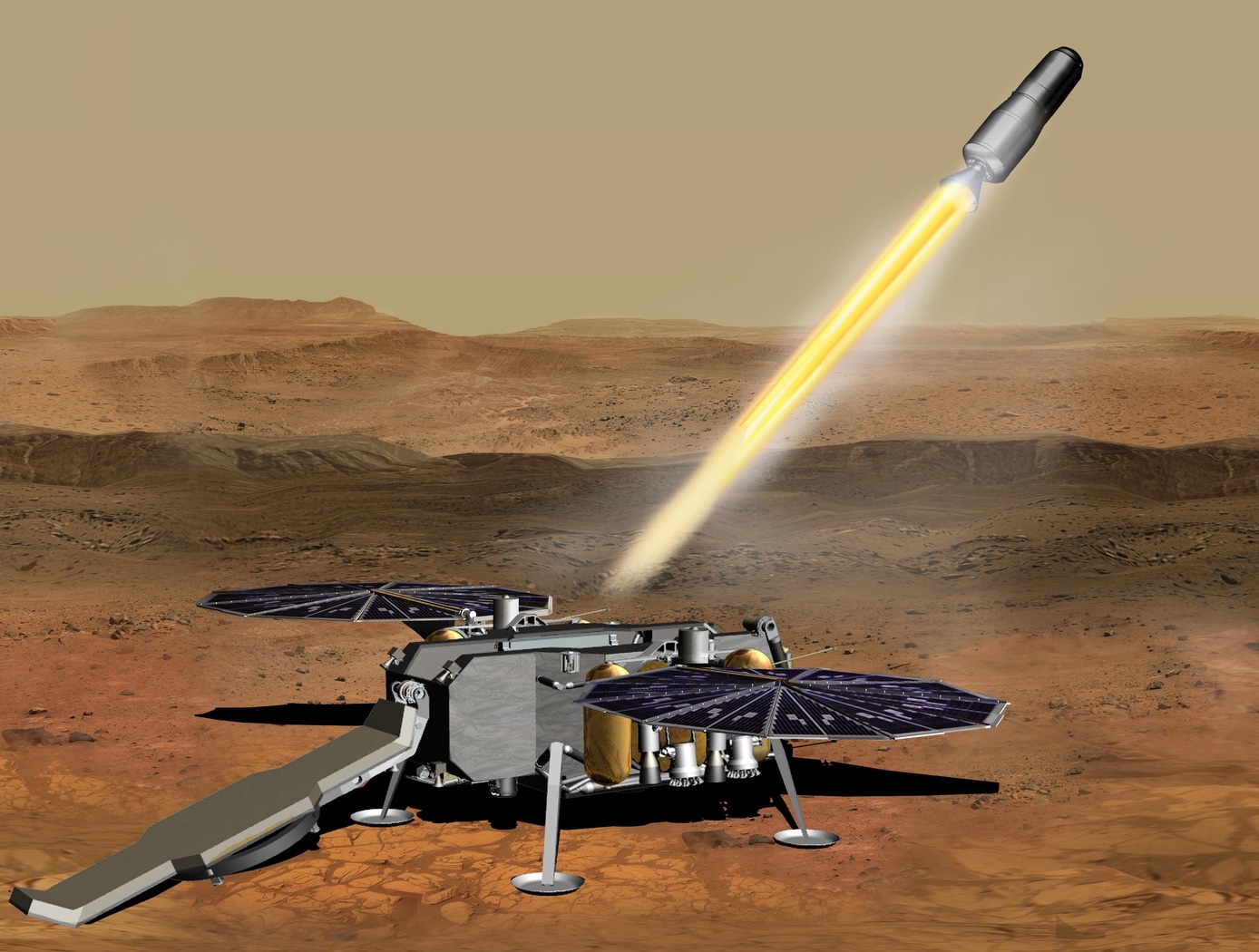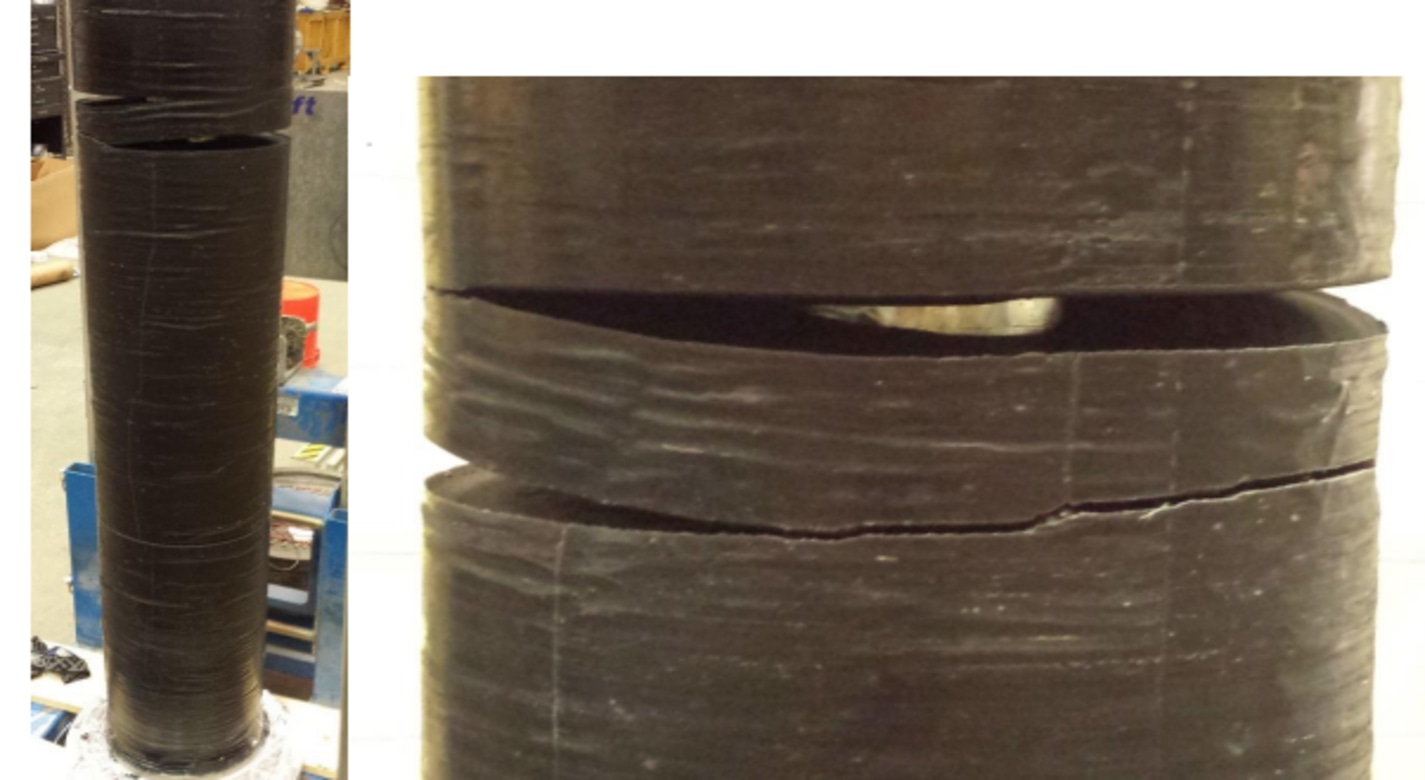Defect-Free Paraffin Fuel Manufacturing
propulsion
Defect-Free Paraffin Fuel Manufacturing (MFS-TOPS-103)
Improvements in Paraffin Fuel Grain Manufacturing
Overview
Innovators at the Marshall Space Flight Center (MSFC) developed a novel paraffin-based fuel and manufacturing process for use in hybrid rocket engines for the Mars Ascent Vehicle (MAV). The fuel has a suitable regression rate and additives for additional strength and survivability. The process addresses the manufacturing issues with larger-diameter paraffin fuel grains. The manufacturing process employs a novel cooling protocol to result in intact monolithic fuel grains at scale for use in propulsion systems with hybrid rocket engines. Engineers are investigating the use of this paraffin-based fuel specifically for MAV because the fuel has a wider storage temperature range than other propellants. The paraffin based fuel survives in low temperatures (-100 C), freeing up energy for other vehicle or mission purposes. Challenges arose with manufacturing these fuel grains due to the ~15% volume liquid to solid phase change, different density ingredients and inherent brittle nature of paraffin wax. Prior manufacturing efforts lead to problems with cracked, unusable fuel grains, and the inability to produce at the scale needed for use in propulsion systems.
The Technology
A paraffin-based hybrid fuel formulation for low-temperature cycling has been developed. Cracked or flawed paraffin fuel grains can pose a safety risk during testing and are unuseable. Cracking of the fuel grain typically occurs during the cool-down process. The paraffin-based fuel grain contracts by as much as 15% while cooling from a liquid at 230°F to a solid state and eventually room temperature, not only causing visible cracking, but residual stresses that can damage the grain throughout processing. The new process is an improvement to others that were tried and found unworkable including spin casting and some additive manufacturing techniques.
To remedy the issues with previous manufacturing efforts, the innovators at MSFC developed an oven program mimicking the intrinsic cooldown process of paraffin wax for use in monolithic casting. Innovators monitored paraffin wax cooling in a stainless steel vessel with four thermocouples to develop the program. Rather than cooling quickly, the oven program cools the grain incrementally, allowing the temperature to equilibrate along the entire grain before cooling further, resulting in greater temperature uniformity. This process produces intact full-scale paraffin fuel grains (11" diameter by 35" length) capable of surviving cold temperatures for use in propulsion systems with hybrid engines.


Benefits
- Effective: prior paraffin fuel grain manufacturing efforts with this paraffin-based fuel resulted in damaged grains that had cracks and posed safety hazards during testing, along with not reaching the required scale for the MAV. The novel manufacturing process results in intact, usable grains.
- Safe and storable: creates paraffin-based fuel grains devoid of cracks and flaws, thereby greatly decreasing the risk of failure of the grain.
- Consistent: provides a process to manufacture intact full-scale paraffin fuel grains with greater consistency than previous manufacturing efforts.
- Efficient: intact paraffin fuel grains have a higher mass loading per diameter in comparison to other lower regression rate hybrid fuel types.
Applications
- Aerospace: ascent vehicles, lunar breaking motors, and any spacecraft utilizing a hybrid rocket engine
- General wax casting: this process can be used for any application involving casting a monolithic wax structure.
Technology Details
propulsion
MFS-TOPS-103
MFS-33633-1
George T. Story, Andrew Prince, Jessica Chaffin, Timothy P. Kibbey, Britt Oglesby and Ashley C. Karp (2018). Low Temperature Hybrid Mars Ascent Vehicle Concept Development and Planning at MSFC. 2018 Joint Propulsion Conference. AIAA.
Ashley C. Karp, Barry Nakazono, Robert Shotwell, Joel Benito, David Vaughan and George T. Story (2017). Technology Development Plan and Preliminary Results for a Low Temperature Hybrid Mars Ascent Vehicle Concept. 53rd AIAA/SAE/ASEE Joint Propulsion Conference. AIAA.
Similar Results

Cladding and Freeform Deposition for Coolant Channel Closeout
LWDC technology enables an improved channel wall nozzle with an outer liner that is fused to the inner liner to contain the coolant. It is an additive manufacturing technology that builds upon large-scale cladding techniques that have been used for many years in the oil and gas industry and in the repair industry for aerospace components. LWDC leverages wire freeform laser deposition to create features in place and to seal the coolant channels. It enables bimetallic components such as an internal copper liner with a superalloy jacket. LWDC begins when a fabricated liner made from one material, Material #1, is cladded with an interim Material #2 that sets up the base structure for channel slotting. A robotic and wire-based fused additive welding system creates a freeform shell on the outside of the liner. Building up from the base, the rotating weld head spools a bead of wire, closing out the coolant channels as the laser traverses circumferentially around the slotted liner. This creates a joint at the interface of the two materials that is reliable and repeatable. The LWDC wire and laser process is continued for each layer until the slotted liner is fully closed out without the need for any filler internal to the coolant channels. The micrograph on the left shows the quality of the bond at the interface of the channel edge and the closeout layer; on the right is a copper channel closed out with stainless.

Fast-Acting, Deep-Throttling Hybrid Motor
Hybrid chemical motors offer an alternative to traditional liquid or solid motors for spacecraft, missiles, rockets, or other vehicles. The key advantage of a hybrid motor is the capability to throttle the motor via active control, which cannot be done in solid propellant motors. However, rapid throttling presents significant challenges to implement in practice.
Here, NASA has combined a deep-throttling hybrid motor previously developed by Utah State University with a fast-acting digital valve design to produce a fast-acting, deep-throttling hybrid. Testing performed to-date using a prototype of the hybrid motor and digital valve design has shown the new hybrid motor to be capable of full-scale throttling twice as fast (1 second throttling compared to 2 seconds) as previous control valve designs. With optimization, there is potential full-range throttling may be further reduced to 0.5 second, a 4x improvement over previous control valve designs for hybrid motors. Additionally, smaller mid-range thrust changes have currently been measured in the 40:1 for relatively small motors (

Premixed, High-Pressure, Multi-Fuel Burner
NASA Glenn's fully premixed burner design accomplishes the rapid mixing of the fuel and air flows while simultaneously providing backside impingement cooling to the burner face. This novel burner technology has been demonstrated to operate on hydrogen-air mixtures at pressures up to 30 bar, and at equivalence ratios (Phi) ranging from 0.15 to 5.0, but typically at equivalence ratios below 0.6 or above 2.0 for extended periods of time. It has also been demonstrated to work well with hydrogen-carbon monoxide fuel mixtures in a 1:1 mixture (by volume). The design provides a uniform zone of combustion products and temperatures, and is able to achieve complete and rapid mixing of the reactant gases over a distance as short as 5 mm, with the combustion products attaining a fully-reacted state within about 10 mm downstream of the burner face. Effectiveness of the mixing is not dependent on the use of hydrogen gas, therefore the system works well for other gaseous fuels such as methane, propane, or natural gas, in a fully premixed mode.
The design of the Glenn's burner is simple and straightforward to manufacture using conventional techniques. The modular design of the burner lends itself to scalability for larger power output applications. This burner is simple to operate and is robust for use in an industrial setting such as low-emissions stationary gas turbine engine, or for aircraft gas turbine engines.

Macroflash (Cup Cryostat)
Advances in new polymers and composites along with growing industrial needs in below-ambient temperature applications have brought about the Macroflash development. Accurate thermal performance information, including effective thermal conductivity data, are needed under relevant end-use conditions. The Macroflash is a practical tool for basic testing of common materials or research evaluation of advanced materials/systems.
The Macroflash can test solids, foams, or powders that are homogeneous or layered in composition. Test specimens are typically 75mm in diameter and 6mm in thickness. The cold side is maintained by liquid nitrogen at 77 K while a heater disk maintains a steady warm-side temperature from ambient up to 373 K. The steady boiloff of the liquid nitrogen provides a direct measure of the heat energy transferred through the thickness of the test specimen. Nitrogen or other gas is supplied to the instrument to establish a stable, moisture-free, ambient pressure environment. Different compression loading levels can also be conveniently applied to the test specimen as needed for accurate, field-representative thermal performance data. The Macroflash is calibrated from approximately 10 mW/m-K to 800 mW/m-K using well-characterized materials.

Modular Artificial-Gravity Orbital Refinery Spacecraft
Modular Artificial-Gravity Orbital Refinery Spacecraft is a solution for refining in-situ materials collected in space, such as from asteroids and Mars moons, as well as recycling spacecraft debris, while orbiting in micro-gravity conditions. The spacecraft is coupled with refining modules for refining and recycling different types of materials. It generates artificial gravity for operation in low-gravity environments. The spacecraft is comprised of rotating rings, each generating artificial gravity and angular momentum. When the rotating rings are combined on the spacecraft platform, however, they have a net near-zero angular momentum such that the spacecraft can change its attitude with minimal propellant or rotate at the rate of the object the spacecraft platform is attached to. The spacecraft platform can self-balance to accommodate different sized modules and modules with moving loads. The refined and recycled materials can be used to create products in-situ as well as products too large to launch from Earth, such as construction of orbiting space habitats, large spacecraft, solar-power stations, and observatories.


